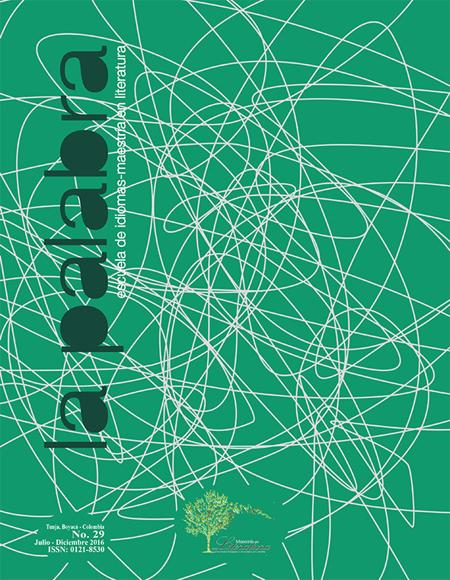Acomiztli Netzahualcóyotl ́sCuícatl:between Nahuatl Ritual and Aesthetics

Abstract
This article delves into the literary tradition of one of the most established cultures of ancient Mexico: the Aztec Náhuatl culture. In this case, the Cuícatl [songs] of the Aztec Nahuatl prince Acomiztli (1402- 1469) and their main lyric topics are discussed in this article. These writings are interpreted from the point of view of literary anthropology, which understands the text as a fragment of a culture; where the center of the analysis involves the creator-subject and his interaction with the environment. Therefore, we begin with concepts such as Náhuatl culture, cuícatl and religious world view, among others. This study seeks to externalize both the message of freedom and hope delivered by the prehispanic cuica - picqui [songwriter] in his Cuícatl , and the contribution of Aztec Náhuatl culture to Latin American literature.Keywords
Náhuatl culture, Cuícatl, evasion, religious world view, fatalism, indigenous mythical roots
References
- Aguiar e Silva, V.M. de (1972). Teoría de la literatura. Madrid: Gredos.
- Cardenal, E. (1967). In Xóchitl in Cuícuatl. La palabra y el hombre, (44), 665-695.
- Cardenal, E. (1968). Netzahualcoyotl. Anales de la Universidad de Antioquia, (171), 370.
- Cruz Kronfly, F. (1998). La tierra que atardece. Ensayos sobre la modernidad y la contemporaneidad. Santafé de Bogotá: Planeta Colombia Editorial S.A.
- Dilthey, W. (1995). Vida y poesía. México: Fondo de Cultura Económica.
- Garibay K., Á.M. (1963). Panorama literario de los pueblos nahuas. México: Porrúa S.A.
- Garibay K., Á.M. (1968). Paleografía, versión, introducción, notas y apéndices. En: Poesía náhuatl III. México: Universidad Nacional Autónoma de México. 3 v.
- Garibay K., Á.M. (1971). Historia de la literatura náhuatl (Vol. I). México: Editorial Porrua.
- Leander, B. (2005). La lengua náhuatl: literatura del México antiguo y moderno. En: Oralidad. Para el Rescate de la Tradición Oral de América Latina y el Caribe. Anuario 14. Las raíces indígenas. La Habana: UNESCO.
- León Portilla, M. (1982). Rostros del México antiguo. Veinte textos. Revista de la Universidad de México, 38(14), 25-35.
- León Portilla, M. (1983). Cuícatl y Tlahtolli las formas de expresión en náhuatl. Estudios de cultura náhuatl, 16. México D.F.: Universidad Autónoma de México.
- León Portilla, M. (1984). Literatura de Mesoamérica. México: Secretaria de Educación Pública.
- León Portilla, M. (2008). La tinta negra y roja: antología de poesía náhuatl. Barcelona: Círculo de lectores: Ediciones ERA: Galaxia Gutenberg.
- Martínez, J.L. (1998). Semblanza de Nezahualcóyotl. México: Fondo de Cultura Económica.
- Nezahualcóyotl, A. (1992). Poetas de España y América. Colección de poesía Quinto centenario. (Antología 1). Bogotá: Editorial Tiempo
- Presente.
- Osuna Ruiz, R. (1968). Introducción a la lírica prehispánica. Macaraibo: Universidad del Zulia, Facultad de Humanidades y Educación.
- Todorov, T. (2005). La conquista de América. El problema del otro. México. Siglo XXI Editores.
Downloads
Download data is not yet available.
